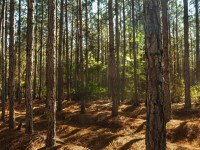HISTORY: Civilian Conservation Corps
S.C. Encyclopedia | President Franklin Delano Roosevelt’s Civilian Conservation Corps (CCC) was a New Deal federal initiative that put millions of unemployed men to work on conservation projects. Initially known as the Emergency Conservation Work program, the CCC represented an unprecedented effort to combine social welfare with conservation on public and private lands. Between 1933 and 1942 South Carolina’s CCC camps employed more than 49,000 workers, many between the ages of 18 and 25. In countless hours of backbreaking and often tedious work, CCC workers fought soil erosion and wildfires, created a state parks system, built roads and trails, erected fire towers, and carried out extensive reforestation projects. Wages sent home by CCC workers helped many families weather the Great Depression.









 We Can Do Better, South Carolina!
We Can Do Better, South Carolina!

























Recent Comments